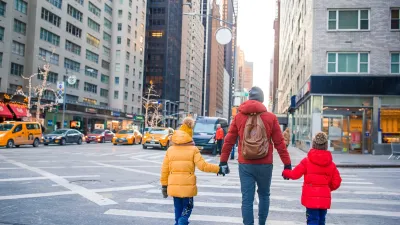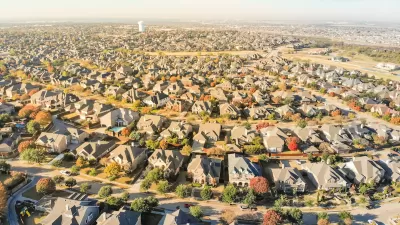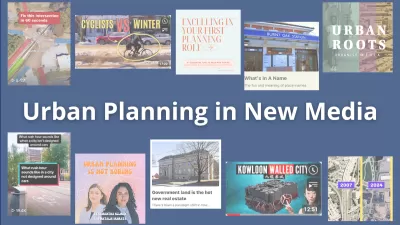Planners are using the popular video platform to explain how car dependence and single-family zoning deepen suburban isolation and affect affordability and sustainability.

Urbanism isn’t entirely new to TikTok, but a new generation of creators passionate about public transit, affordable housing, and walkability is bringing wonky planning concepts like induced demand to a massive young audience. As Sarah Holder writes in Bloomberg CityLab, “Many of the most active posters on TikTok are professionals — or professionals-to-be — in their respective fields, not just armchair urbanists. But the app doesn’t favor individual personalities, and like-minded posters don’t generally congregate in groups.” According to Holder, “While their content varies, these creators share a similar goal: to spread the gospel of urbanism to a new generation, and push policies that advance environmental adaptation and housing affordability.”
During the pandemic, when many suburban teens found themselves isolated in their car-centric neighborhoods, some TikTok creators found an opportunity to reach young people with videos that explained the historical reasons why the suburbs are often so “deeply isolating” for teens. “Deterring car dependence, exposing the violence of urban renewal, and diversifying cookie-cutter neighborhoods zoned for single-family homes are recurrent themes.”
Others found themselves showing diverse representation in the urban planning field, prompting teens to find out more about the profession. According to city planner and TikTok-er Brittany Simmons, “A lot of people don’t know what these fields are.” Simmons continues, “It’s not that they’re not interested; they literally just don’t know that they exist.”
“When it comes to reshaping the physical world, some creators acknowledge that online virality can only go so far.” Still, writes Holder, “it's certainly getting more people to care.”
FULL STORY: On TikTok, Teens Stuck in the Suburbs Get the Urbanist Pitch

Maui's Vacation Rental Debate Turns Ugly
Verbal attacks, misinformation campaigns and fistfights plague a high-stakes debate to convert thousands of vacation rentals into long-term housing.

Planetizen Federal Action Tracker
A weekly monitor of how Trump’s orders and actions are impacting planners and planning in America.

San Francisco Suspends Traffic Calming Amidst Record Deaths
Citing “a challenging fiscal landscape,” the city will cease the program on the heels of 42 traffic deaths, including 24 pedestrians.

Defunct Pittsburgh Power Plant to Become Residential Tower
A decommissioned steam heat plant will be redeveloped into almost 100 affordable housing units.

Trump Prompts Restructuring of Transportation Research Board in “Unprecedented Overreach”
The TRB has eliminated more than half of its committees including those focused on climate, equity, and cities.

Amtrak Rolls Out New Orleans to Alabama “Mardi Gras” Train
The new service will operate morning and evening departures between Mobile and New Orleans.
Urban Design for Planners 1: Software Tools
This six-course series explores essential urban design concepts using open source software and equips planners with the tools they need to participate fully in the urban design process.
Planning for Universal Design
Learn the tools for implementing Universal Design in planning regulations.
Heyer Gruel & Associates PA
JM Goldson LLC
Custer County Colorado
City of Camden Redevelopment Agency
City of Astoria
Transportation Research & Education Center (TREC) at Portland State University
Jefferson Parish Government
Camden Redevelopment Agency
City of Claremont





























